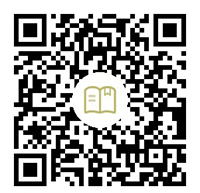扫码一下
查看教程更方便
SOAP 包含一组用于编码数据类型的内置规则。 它使 SOAP 消息能够指示特定的数据类型,例如整数、浮点数、双精度数或数组。
http://schemas.xmlsoap.org/soap/encoding/http://www.w3.org/2001/12/soap-encoding对于标量类型,SOAP 采用 XML Schema 规范指定的所有内置简单类型。 这包括字符串、浮点数、双精度数和整数。
下表列出了主要的简单类型,摘自 XML Schema Part 0 - Primer http://www.w3.org/TR/2000/WD-xmlschema-0-20000407/
| 简单的类型 | 示例 |
|---|---|
| string | Confirm this is electric. |
| boolean | true, false, 1, 0. |
| float | -INF, -1E4, -0, 0, 12.78E-2, 12, INF, NaN. |
| double | -INF, -1E4, -0, 0, 12.78E-2, 12, INF, NaN. |
| decimal | -1.23, 0, 123.4, 1000.00. |
| binary | 100010 |
| integer | -126789, -1, 0, 1, 126789. |
| nonPositiveInteger | -126789, -1, 0. |
| negativeInteger | -126789, -1. |
| long | -1, 12678967543233 |
| int | -1, 126789675 |
| short | -1, 12678 |
| byte | -1, 126 |
| nonNegativeInteger | 0, 1, 126789 |
| unsignedLong | 0, 12678967543233 |
| unsignedInt | 0, 1267896754 |
| unsignedShort | 0, 12678 |
| unsignedByte | 0, 126 |
| positiveInteger | 1, 126789. |
| date | 1999-05-31, ---05. |
| time | 13:20:00.000, 13:20:00.000-05:00 |
例如,这里是一个双数据类型的 SOAP 响应
<?xml version = '1.0' encoding = 'UTF-8'?>
<SOAP-ENV:Envelope
xmlns:SOAP-ENV = "http://www.w3.org/2001/12/soap-envelope"
xmlns:xsi = "http://www.w3.org/2001/XMLSchema-instance"
xmlns:xsd = "http://www.w3.org/2001/XMLSchema">
<SOAP-ENV:Body>
<ns1:getPriceResponse
xmlns:ns1 = "urn:examples:priceservice"
SOAP-ENV:encodingStyle = "http://www.w3.org/2001/12/soap-encoding">
<return xsi:type = "xsd:double">54.99</return>
</ns1:getPriceResponse>
</SOAP-ENV:Body>
</SOAP-ENV:Envelope>
SOAP 数组有一组非常具体的规则,要求我们同时指定元素类型和数组大小。 SOAP 还支持多维数组,但并非所有 SOAP 实现都支持多维功能。
要创建数组,我们必须将其指定为数组的 xsi:type。 该数组还必须包含一个 arrayType 属性。 需要此属性来指定包含元素的数据类型和数组的维度。
例如,以下属性指定了一个包含 10 个双精度值的数组
arrayType = "xsd:double[10]
相反,以下属性指定了一个二维字符串数组
arrayType = "xsd:string[5,5]"
这是一个带有双值数组的示例 SOAP 响应
<?xml version = '1.0' encoding = 'UTF-8'?>
<SOAP-ENV:Envelope
xmlns:SOAP-ENV = "http://www.w3.org/2001/12/soap-envelope"
xmlns:xsi = "http://www.w3.org/2001/XMLSchema-instance"
xmlns:xsd = "http://www.w3.org/2001/XMLSchema">
<SOAP-ENV:Body>
<ns1:getPriceListResponse
xmlns:ns1 = "urn:examples:pricelistservice"
SOAP-ENV:encodingStyle = "http://www.w3.org/2001/12/soap-encoding">
<return xmlns:ns2 = "http://www.w3.org/2001/09/soap-encoding"
xsi:type = "ns2:Array" ns2:arrayType = "xsd:double[2]">
<item xsi:type = "xsd:double">54.99</item>
<item xsi:type = "xsd:double">19.99</item>
</return>
</ns1:getPriceListResponse>
</SOAP-ENV:Body>
</SOAP-ENV:Envelope>
结构包含多个值,但每个元素都使用唯一的访问器元素指定。 例如,考虑产品目录中的一个项目。 在这种情况下,结构可能包含产品 SKU、产品名称、描述和价格。 下面是这样一个结构在 SOAP 消息中的表示方式
<?xml version = '1.0' encoding = 'UTF-8'?>
<SOAP-ENV:Envelope
xmlns:SOAP-ENV = "http://www.w3.org/2001/12/soap-envelope"
xmlns:xsi = "http://www.w3.org/2001/XMLSchema-instance"
xmlns:xsd = "http://www.w3.org/2001/XMLSchema">
<SOAP-ENV:Body>
<ns1:getProductResponse
xmlns:ns1 = "urn:examples:productservice"
SOAP-ENV:encodingStyle = "http://www.w3.org/2001/12/soap-encoding">
<return xmlns:ns2 = "urn:examples" xsi:type = "ns2:product">
<name xsi:type = "xsd:string">Red Hat Linux</name>
<price xsi:type = "xsd:double">54.99</price>
<description xsi:type = "xsd:string">
Red Hat Linux Operating System
</description>
<SKU xsi:type = "xsd:string">A358185</SKU>
</return>
</ns1:getProductResponse>
</SOAP-ENV:Body>
</SOAP-ENV:Envelope>
注意- 请在编写 SOAP 代码时注意适当的缩进。 结构中的每个元素都使用唯一的访问器名称指定。 例如,上面的消息包括四个访问器元素——名称、价格、描述和 SKU。 每个元素都可以有自己的数据类型。 例如,name 指定为字符串,而 price 指定为 double。
